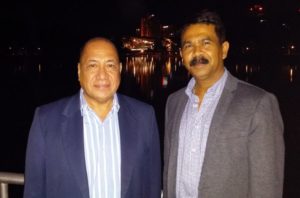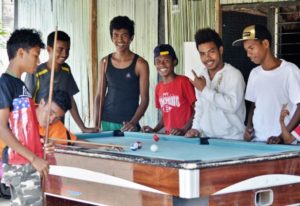
An agreement between the Government of Timor-Leste, the United Nations Development Program (UNDP) and Flinders University will see Flinders researchers take a crucial role in developing a policy blueprint for Timor-Leste’s social and economic future.
A team of demographers from the School of the Environment, led by Dr Udoy Saikia (who will also be lead author), will oversee the data collection and perform the analysis for the Timor-Leste National Human Development Report, which will focus on the nation’s youth and their well-being.
With funding of around $400,000, the report will involve the survey of a representative sample of Timor-Leste’s youth population across the country’s regions, and will be conducted down to village level by local researchers, who will be trained in survey techniques.
Mr Agio Pereira, President of the Council of Ministers of Timor-Leste, said he was delighted with the collaboration and excited by the start of the process that will produce the Timor-Leste National Human Development Report (NHDR) 2016-17.
“The NHDR will stimulate debates around the challenges of realising the youth dividend in Timor-Leste through identifying socially inclusive, innovative ways to diversify the workplace,” Mr Pereira said.
“Youth wellbeing and demographic dividend that this report is going to address will be vital in the country’s continued progress towards the achievement of the United Nations Sustainable Development Goals (SDGs) to which Timor-Leste is a signatory.”
With some 70 per cent of the population under 30 years old, Dr Saikia said that Timor-Leste shows the typical demographic “bulge” of large numbers of young people in the populations of developing countries following independence.
In the face of poverty and unemployment, the bulge can lead to social unrest and conflict.

On the other hand, Dr Saikia said, there is also an opportunity to translate the population bulge into a demographic dividend, as demonstrated by countries such as South Korea.
“If governments are clever and sensitive enough to invest in this cohort from the beginning, then that cohort can be extremely productive – instead of being a curse, it can be a blessing for the whole country,” he said.
The report aims to provide a policy framework to drive diversification of the economy, enlisting local knowledge and skills through area-based development, backed by appropriate education and skills training.
“Investing in youth is vital – even if it is not profit-making in an immediate sense, the benefits in the long term will be enormous,” Dr Saikia said.
As well as identifying the appropriate sectors for development and job creation, the report will look to find pathways for Timor-Leste to close the so-called “ingenuity gap”, which is created by the capacity of developed nations to embrace technological change far more quickly than developing countries.
“They need to be not only productive within the nation, but also internationally competitive,” Dr Saikia said.
Dr Saikia will be supported by Associate Professor Gour Dasvarma and Dr James Chalmers, with Dr Merve Hosgelen based in the Timor-Leste capital Dili as Project Manager.
The report will be launched in Dili next week. The team expects to present and disseminate the report findings in 18 months’ time.

